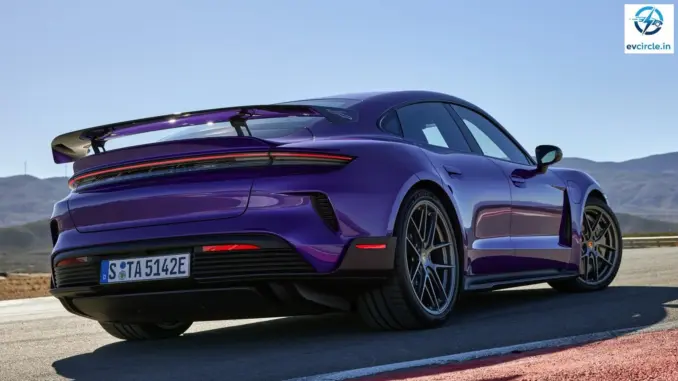
Determining which electric vehicle (EV) battery charges the quickest in 2025 depends on who you ask, what methodology they use, and which exact cars they have evaluated. Those variables can produce divergent outcomes. Other elements, such as the battery’s state of charge, its temperature, the ambient temperature, the EV’s maximum charging capability, and the charging station’s output limits, will also cause differences in charging duration. The fastest charge times are typically achieved with a Level 3 DC fast charger. These chargers are commonly located at highway charging stops and on the Tesla Supercharger network, which many EVs can now access, including models from Hyundai, Kia, and Genesis.
The testing approaches used by different outlets can vary significantly, making head-to-head comparisons tricky. For example, one publication times charging from 10 percent to 90 percent, while another charges from 10 percent to 80 percent. Kelley Blue Book employs a completely different yardstick, ranking EVs by how many miles of range they add per minute while charging. That helps explain why various publications place different EVs at the top. With that context, here are three leading contenders for the fastest-charging EV title.
2025 Porsche Taycan Turbo GT
One publication names the 2025 Porsche Taycan Turbo GT as the EV with the fastest-charging battery in 2025 — the quickest they have ever recorded. It charges at an average of 213 kilowatts (kW). The Taycan was the first EV to adopt an 800V system, cutting charge times. The Taycan Turbo GT also registered a peak charging rate of 314 kW, allowing its 97 kilowatt-hour (kWh) battery to go from 10% to 90% state of charge in just 24 minutes. Our review noted that the Weissach-spec Taycan Turbo GT is a 2-seat electric powerhouse, and testing credits it with a 0 to 60 mph run of only 1.9 seconds. The starting price for the Taycan Turbo GT is $239,400 plus $2,350 delivery fees.
The publication follows a specific procedure for measuring charging speeds. The battery is preconditioned when feasible, meaning it is heated or cooled to a temperature that enables faster charging while helping preserve battery life. They then log the cost of the charge, the charging rate, and the time required. Their measured charging window is always from 10 percent to 90 percent, using a standard charger. Because the quality of public charging stations can vary widely, it’s helpful to know the best public EV charging networks when you need to charge your car. They also attempt to avoid DC fast-charging tests in extreme temperatures, which can impair an EV’s performance.
2025 Lotus Eletre
The 2025 Lotus Eletre is the fast-charging front-runner according to another outlet. Their protocol charges each vehicle from 10 percent to 80 percent, using the most powerful public chargers available. The Eletre, which also uses an 800V architecture, can charge from 10 percent to 80 percent in only 20 minutes on a 350 kW charger, dropping to 14 minutes with a 400 kW charger, per information provided by Lotus.
Lotus markets the Eletre as a “pure electric performance SUV,” which requires some adjustment to the notion of a Lotus being both an EV and an SUV. It is offered in most markets with two drivetrain options. The entry-level version features a 612-horsepower, dual-motor setup, while the upgraded model boosts output to 918 horsepower with a two-speed transmission. Only the 918-horsepower variant, dubbed the Eletre Carbon here, will be sold in the U.S.
Our first drive of the Lotus Eletre found that the ride and handling suited an SUV, the tech and cabin were quite good, and the acceleration felt more progressive, like a gasoline sports car. The base price of the 2025 Lotus Eletre Carbon is $229,000 plus $3,000 freight fees, which likely reflects the hefty tariff on Chinese-made EVs now that Lotus is owned by China’s Geely Motors and the Eletre is manufactured there.
2026 Lucid Gravity
Kelley Blue Book (KBB) reports that the Lucid Gravity, debuting as a 2026 model, is the fastest-charging EV. It topped their charging test using a different methodology that measures how quickly an EV can add range, with the quickest charger coming out on top. The Gravity prevailed, achieving a chart-leading charging rate of 18.2 miles of range per minute while connected to a DC fast charger. The Gravity’s 926V charging architecture surpasses the others and clearly helps its performance.
KBB notes that outcomes like these will evolve as the overall quality of the charging infrastructure improves and new technologies appear on both the battery and charging sides. In short, your ‘mileage’ may vary.
For more information on how government policy can influence the EV market, see the Complete Guide to PM E-DRIVE Scheme Benefits and Implementation.
The 2025 Lucid Gravity is a new SUV from the EV startup, joining the Lucid Air sedan in the lineup. Its SUV shape should draw more buyers. Our first drive of the 2025 Lucid Gravity showcased its uncanny ability to blend the best traits of a supercar and a minivan. Another publication echoed this, dubbing the Lucid Gravity “a Mega-Minivan,” with a zero to 60 mph time of 3.1 seconds and a quarter-mile time of 10.6 seconds at 140 mph in the most powerful 1,070-horsepower model. Only the Grand Touring trim of the Lucid Gravity is currently available — with a base price of $94,900 plus $2,000 transportation. A less expensive Touring trim priced at $79,900 plus transportation is promised for late 2025.
Sustainability advocate with a keen eye on policies, trends, and real-world EV impact.
Leave a Reply